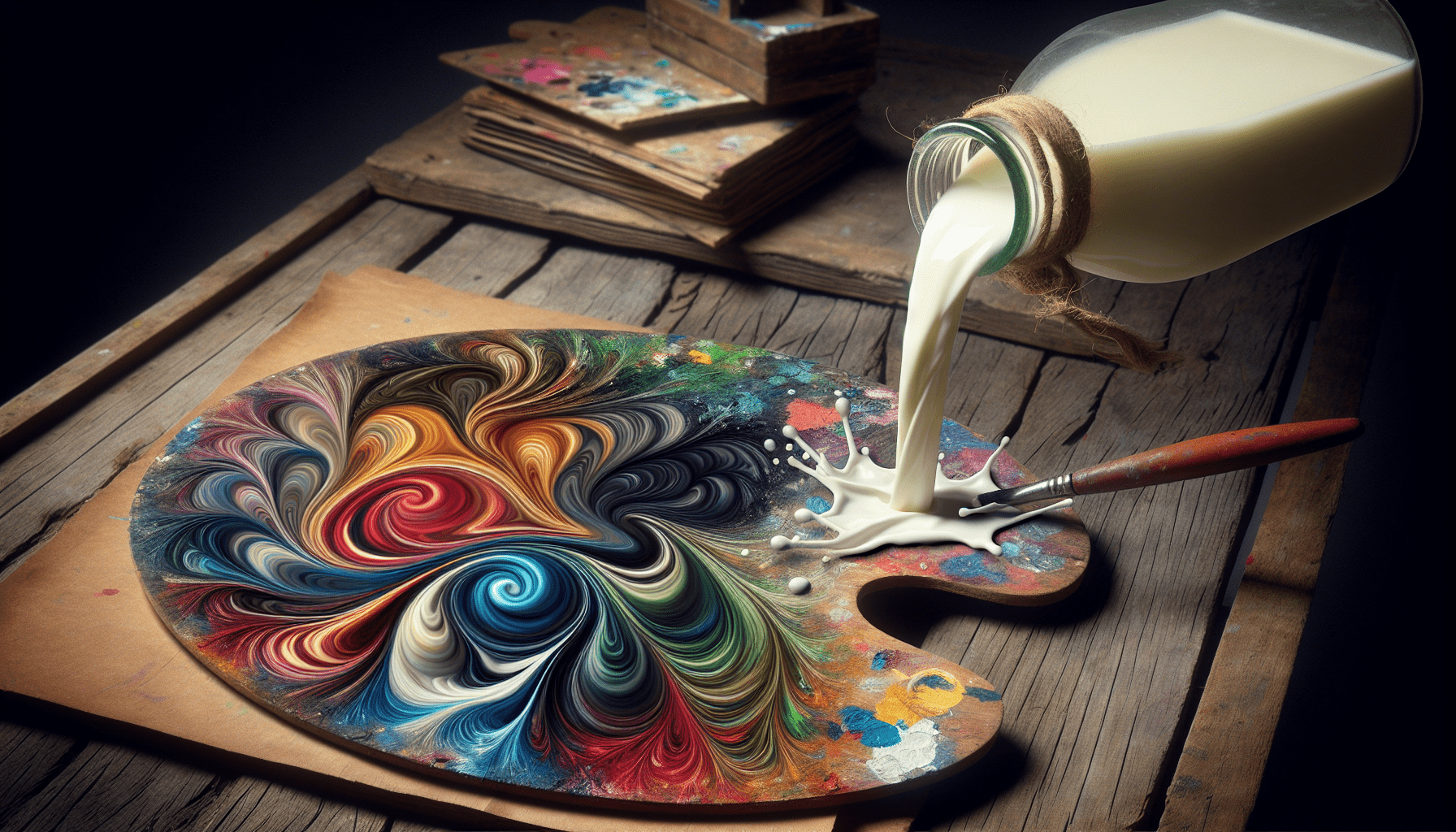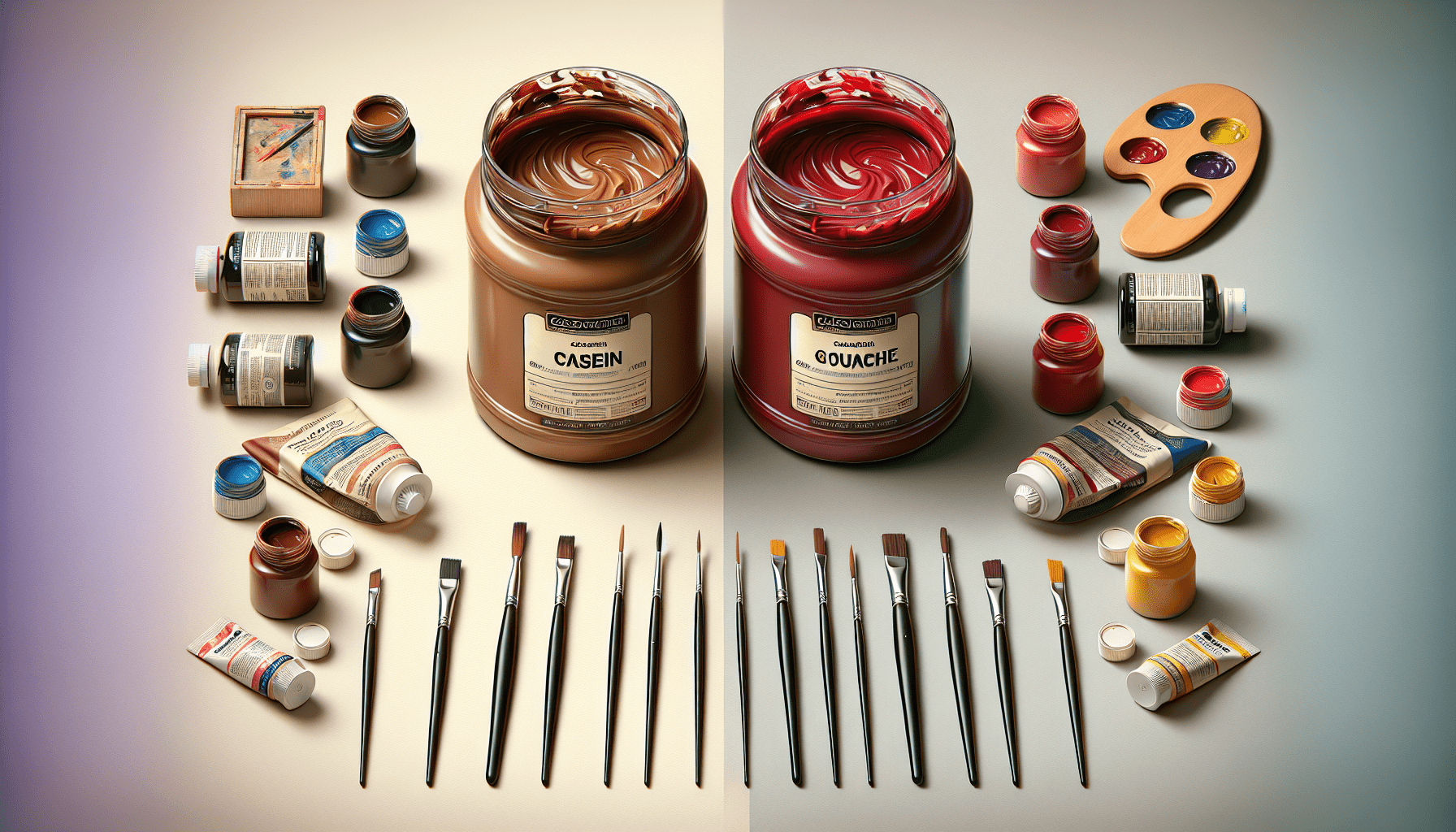Is Milk Paint The Same As Casein Paint?
Have you ever wondered whether milk paint and casein paint are identical, or if they have distinct characteristics that set them apart? In the realm of paints and finishes, these two terms often appear interchangeably, yet it’s crucial to determine their similarities and differences for informed decision-making in your projects.

Understanding Milk Paint
To discern whether milk paint is the same as casein paint, you should first develop a solid understanding of what milk paint truly is. Milk paint is an ancient painting medium, known for its environmentally friendly properties and rich history. It is often made from simple, natural ingredients such as milk protein (casein), lime, and natural pigments, which gives it its distinctive name.
Composition of Milk Paint
The basic composition of milk paint consists of the following components:
- Casein: This is a milk protein that serves as the binder, offering the paint its adhesive properties.
- Lime: Acting as a filler and preservative, lime enhances the paint’s durability over surfaces.
- Natural Pigments: These substances provide color to milk paint, typically derived from minerals, plants, or other natural materials.
Benefits of Milk Paint
You may appreciate milk paint for its eco-friendliness, as it contains no volatile organic compounds (VOCs). Moreover, it offers a matte finish that can be easily distressed, making it popular for projects that require an antique or vintage appearance. Its composition also makes it biodegradable and non-toxic, suitable for household and interior use.
Exploring Casein Paint
Now that you’ve grasped the makeup of milk paint, it’s time to delve into the characteristics of casein paint. Casein paint, as the name implies, utilizes casein as its central binder but often incorporates other modern ingredients to create a more robust and versatile finish.
What Constitutes Casein Paint?
Casein paint’s formulation can be seen as an evolution from milk paint, incorporating synthetic and natural ingredients. Common components include:
- Casein: The fundamental protein that acts as the paint binder.
- Ammonia or Borax: Used to dissolve casein more effectively, improving its mixability and stability.
- Water: Acts as a solvent to create a spreadable consistency.
- Pigments: May include both natural and synthetic sources, providing a wide color range.
Advantages of Casein Paint
Its enhanced formula gives casein paint a reputation for increased versatility. It dries into a water-resistant film, which makes it suitable for a broader range of applications including murals, interiors, and even exterior surfaces. Additionally, its compatibility with other mediums allows you to mix or layer it with oils and acrylics for various artistic effects.
Comparing Milk Paint and Casein Paint
You might now question, how exactly do milk and casein paints compare side by side? By examining their similarities and differences, you can gain clarity on their unique qualities.
Similarities Between Milk Paint and Casein Paint
- Casein as a Binder: Both types of paint rely on casein to provide adhesion properties.
- Environmental Friendliness: Both paints tout eco-friendly ingredients, reducing environmental impact compared to conventional paints.
- Natural Finish: Each offers a beautiful matte finish that can be distressed for textures and aged appearances.
Differences Between Milk Paint and Casein Paint
| Aspect | Milk Paint | Casein Paint |
|---|---|---|
| Composition | Traditionally includes milk protein, lime, and natural pigments | Combines casein with more modern additives like ammonia or borax |
| Durability | More suited to porous surfaces and interiors | Offers water-resistance, suitable for broader applications |
| Application | Tends to require more preparation, such as mixing from powder | Ready-to-use with simpler preparation |
| Finish | Widely known for its flat, chalky finish | Provides a slightly more satin finish |
Practical Applications
When confronted with a project, you may wonder: which paint should you choose? The answer largely depends on the specifics of your project and desired outcome.
When to Use Milk Paint
Milk paint is ideal for projects where you desire a vintage, distressed look. Furniture restorers, interior decorators, and even DIY enthusiasts may gravitate toward this option for its aesthetic qualities. Given its biodegradable nature, it is also suitable for children’s furniture and environmentally focused designs.
When to Use Casein Paint
On the other hand, you might find casein paint more fitting for complex artistic endeavors or areas requiring a more durable finish. Its versatility in application and potential for creating various textures and effects make it a favorite among artists and professionals seeking a reliable yet dynamic material.

Historical Context and Evolution
Considering the historical context enriches your understanding of these paints’ development and usage over centuries.
Origins of Milk Paint
Milk paint traces its origins back thousands of years to ancient Egypt and beyond. Its use has been documented in the tombs of Pharaohs, testifying to its longstanding reliability and appeal. Its evolution over time into commercial applications is a testament to its timelessness and adaptable nature.
Development of Casein Paint
While casein paint shares a similar ancient lineage, its modern form developed significantly during the late 19th and early 20th centuries. The innovation in chemical processes allowed casein to be more efficiently manufactured, opening up new possibilities for artists and craftsmen alike.
Environmental and Health Considerations
In contemporary settings, sustainability and health impacts play a vital role in choosing materials. Understanding the implications of using milk and casein paints can guide you in making eco-conscious decisions.
Environmental Impact
Both paints are generally regarded as environmentally friendly due to their organic compositions. The biocompatibility and non-toxic nature make them favorable choices over conventional paint formulas laden with synthetic chemicals and VOCs.
Health Benefits
For interior applications, especially in homes with children or individuals with respiratory sensitivities, opting for paint with low-to-no VOC content is a priority. You can confidently select milk or casein paints, knowing they align with health-conscious practices.
Application Techniques
Proficiency with specific application techniques can enhance the result of using milk or casein paint. Consider perfecting these methods to achieve desired effects.
Preparing the Surface
Regardless of your choice, surface preparation is vital. For milk paint, lightly sanding the surface ensures the paint adheres correctly, while for casein paint, a clean and dry base is crucial due to its water-based nature.
Mixing and Applying Milk Paint
Typically, milk paint arrives in powder form, requiring you to mix it with water. Use equal parts water and powder, stirring thoroughly to remove lumps before applying with a brush or sprayer. Its fast drying time necessitates working quickly, often in layers.
Applying Casein Paint
Casein paint often comes ready-made or requires minimal mixing, making it more convenient for immediate use. You can apply it with brushes, rollers, or sprayers, and it blends well with other media, allowing extensive creative possibilities.
Conclusion
By now, you should have a clearer understanding of the distinctions and similarities between milk paint and casein paint. While both share the common element of casein as a binder and promote eco-friendliness, their compositions, applications, and historical significance illustrate a fascinating contrast.
Choosing between these paints will largely depend on the requirements of your project and personal preference for finishes and application ease. Whether attracted to the traditional allure of milk paint or the versatile utility of casein paint, both mediums offer a unique, sustainable option in the world of art and design.



